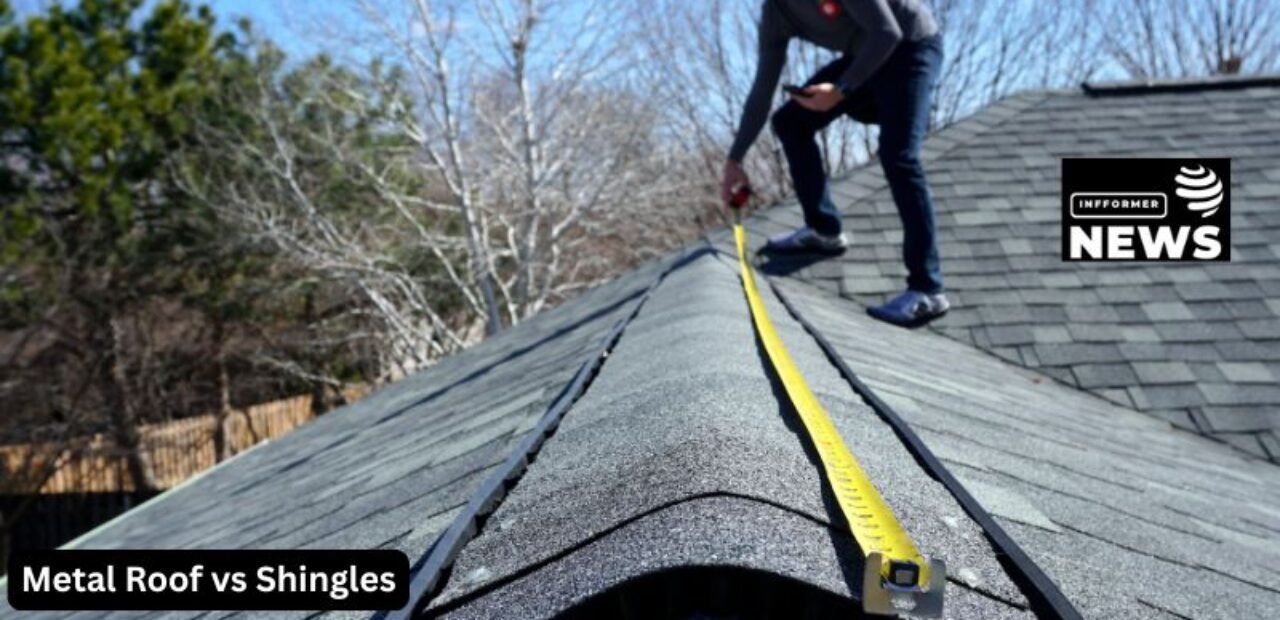Metal Roof vs Shingles: Which Roofing Option Is Right for Your Home?
When your roof is being replaced, one big question comes up: Should you choose a metal roof or asphalt shingles? Both options can protect your home and keep it looking great, but they’re different in how they work, how long they last, and how much they cost.
This guide breaks it all down in simple terms, so you can feel confident making the best choice for your home.
What Is a Metal Roof?
Metal roofs are made from steel, aluminum, copper, or zinc. These materials are super tough and can handle almost anything nature throws at them: heavy rain, snow, strong winds, and even fire. Some metal roofs are smooth and modern-looking, while others are designed to look like traditional shingles, slate, or even wood shakes.
Metal panels are coated to prevent rust and fading, and they usually interlock to keep water out. This makes metal roofs a strong and stylish option for all kinds of homes.
What Are Asphalt Shingles?
Asphalt shingles are the most common roofing material in the U.S. They’re made with a base layer (usually fiberglass), covered in asphalt, and topped with small granules that give them color and protection. Shingles are lightweight, easy to install, and come in many shapes and colors.
They’re a go-to choice for many homeowners because they’re affordable, reliable, and blend in well with most neighborhoods.
How Long Does Each Roof Type Last?
Metal Roof Lifespan:
Metal roofs can last 40 to 70 years, sometimes even longer, with good care. They’re resistant to rot, mold, pests, and fire, making them a long-term option for people who plan to stay in their home for decades.
Asphalt Shingle Lifespan:
Asphalt shingles usually last 20 to 30 years, but cheaper ones may need replacing after 12 to 15 years. Over time, they can curl, lose granules, or crack, especially in harsh weather.
What About Cost?
Upfront Cost:
Shingles are cheaper to install—usually between $2 to $5 per square foot.
Metal roofs cost more upfront—typically $6 to $15 per square foot, depending on the metal and design.
Long-Term Value:
While metal roofs cost more at first, they often end up being more affordable in the long run. Why? Because they last longer, need fewer repairs, and can even lower your energy bills.
Energy Efficiency
Metal roofs reflect sunlight, helping your home stay cooler in summer. Some studies say they can cut cooling costs by up to 40%. They also pair well with insulation to keep heat in during winter.
Asphalt shingles, especially dark ones, absorb heat and can make your home warmer during hot months. This might increase your air conditioning use and energy bills.
How They Handle Weather
Metal roofs are built for tough weather. They resist wind, fire, snow, and hail. Some are strong enough to meet the strictest hurricane codes.
Shingles can do well in mild climates, but they’re more likely to suffer in storms. High winds can lift shingles, and moisture can cause mold or algae to grow.
Style and Looks
Both types come in many colors and styles.
Metal roofs can be sleek and modern, or they can mimic shingles or tiles.
Shingles offer a more traditional look and blend easily into most neighborhoods.
Solar and Noise Considerations
Metal roofs are great for solar panels. With standing seam designs, solar brackets can be attached without drilling holes.
Some people worry about metal roofs being noisy, but with good insulation, they’re just as quiet as shingles during rain or hail.
Which Roof Should You Choose?
It depends on your goals:
Choose a metal roof if:
You plan to stay in your home a long time
You want durability and energy savings
You live in an area with harsh weather
Choose asphalt shingles if:
You need a more affordable option right now
You want a fast installation
You live in a milder climate
Final Thoughts
Both metal and asphalt roofs have their strengths. Metal offers durability, energy savings, and long-term value. Asphalt shingles are more budget-friendly upfront and still provide solid protection.
The best roof is the one that fits your home, your climate, and your future plans.
Let me know if you’d like this adapted into a location-specific service page or a downloadable comparison checklist!





























































